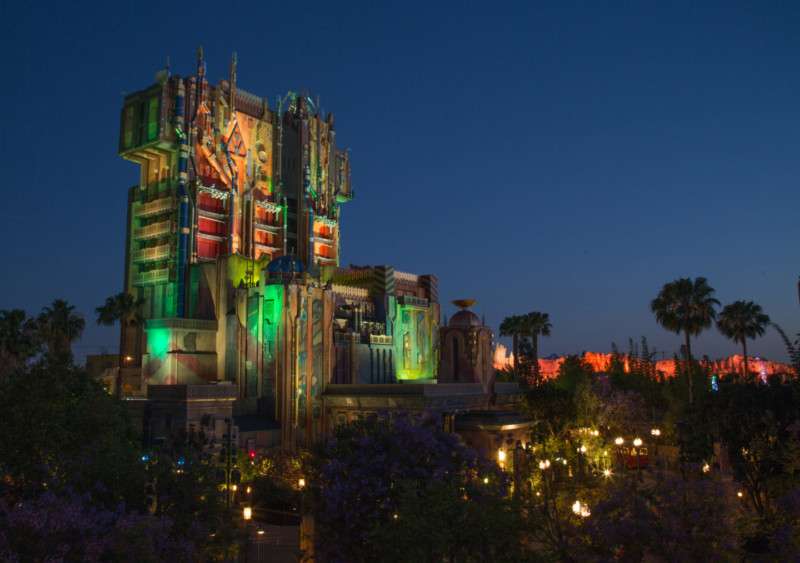All the park’s a stage
by Freddy Martin
读中文
ABOVE: Guardians of the Galaxy – Mission: BREAKOUT! at Disney’s California Adventure Park is a cutting edge attraction utilizing the latest LED video wall technology. Photo: Rob Sparacio/Disneyland Resort
The job of theme park designers and operators is to offer audiences innovative experiences that they cannot have outside the berm. Innovation requires technology breakthroughs and availability to expand artistic and technical capabilities.
When visitors first walked through early amusement parks like Vauxhall or Tivoli Gardens they were awed by the sight of hundreds of gas lamps flickering to life at dusk. Later, when Luna Park filled the air with thousands of twinkling electrical lights, guests could not believe their eyes.
Likewise, the steam calliope made its way from the riverboats to permanent homes in boardwalk amusements such as Coney Island where its sounds delighted guests and set the mood for fun. This gave way to recorded music which could be changed at will with the lift of a needle. With each new advancement in audio and visual technology, themed entertainment venues have sought to surprise their guests with new sights and sounds every time they visit.
Today’s experts are exploring and employing multiple AV platforms to entertain, educate, and wow their guests. They are combining the art forms of stagecraft and filmmaking, with advancements in robotic lights and powerful video projection, along with new-century visualization technologies.
We spoke to numerous designers, service providers, and operators – all with substantial industry credits and international experience – to share their observations and insight and to identify 10 AV technologies that are helping to accelerate the current evolution of the themed entertainment industry.
Not surprisingly, their answers focused less on specific tools, brands, or solutions, than on how the technologies work together to offer increasing flexibility and control. Like visual artists who work in mixed media on canvas, these experts recognize that a blended use of today’s available AV technologies ultimately leads to greater opportunities for creativity and effective storytelling.
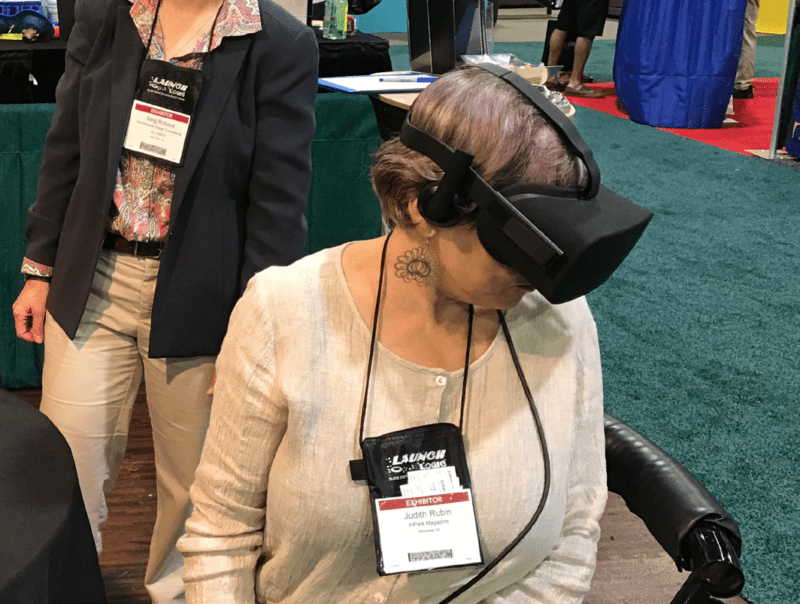
“Innovation does not have to start from zero. We use what is available to mix and match, to customize and improve upon the technology,” said Bingo Tso, Senior Vice President of Advanced Communication Equipment (ACE), a major AV provider based in Hong Kong, among whose credits are “Legend of Camel Bells,” a theatrical spectacle recently honored with a TEA Thea Award. “All in all, the available products and technologies combined cannot replace the need to integrate with the artistic requirement.”
So here, in no particular order, are the top 10 AV technologies being used to revolutionize the themed entertainment industry today.
Virtual Reality
There is no question that Virtual Reality (VR) is an exciting AV technology that the industry desires to utilize as a storytelling medium for guests. At the same time, it’s unanimous that VR has its challenges. Standard themed entertainment concerns such as throughput, repeatability, and accessibility remain barriers to broad, in-park installations. Even more concerning is the fact that VR can be location-agnostic, with home applications nearly as immersive as within the berm.
Still, standalone attractions like The Void, based on popular IP, have set an example of how the medium can enhance an out-ofhome destination. And museums, FECs, and escape rooms have adapted VR to enhance the sensory response to their existing attractions.
“These technologies enable a more intimate sensory experience,” said Alan Anderson of Smart Monkeys, a leading show control specialist headquartered in Miami. “The story is lived in a more ‘primal’ way and allows a deeper emotional connection. The opportunities for creating meaningful attractions are exponential.”
Augmented Reality
The continuing evolution of tablet and app technology is creating new ways for guests to interact with the exhibits and one another. Augmented Reality (AR) applications put the power to influence the outcomes of the experience literally into the hands of the guests.
The Crayola Experience, a multi-location brand museum and activity center, uses AR technology in an attraction called Color Magic that allows guests to interact with the company’s core product in a unique way. Visitors color the image of a character on paper, scan it into a console, and, in seconds, their artwork comes to life on screen as an animated character they can play with.
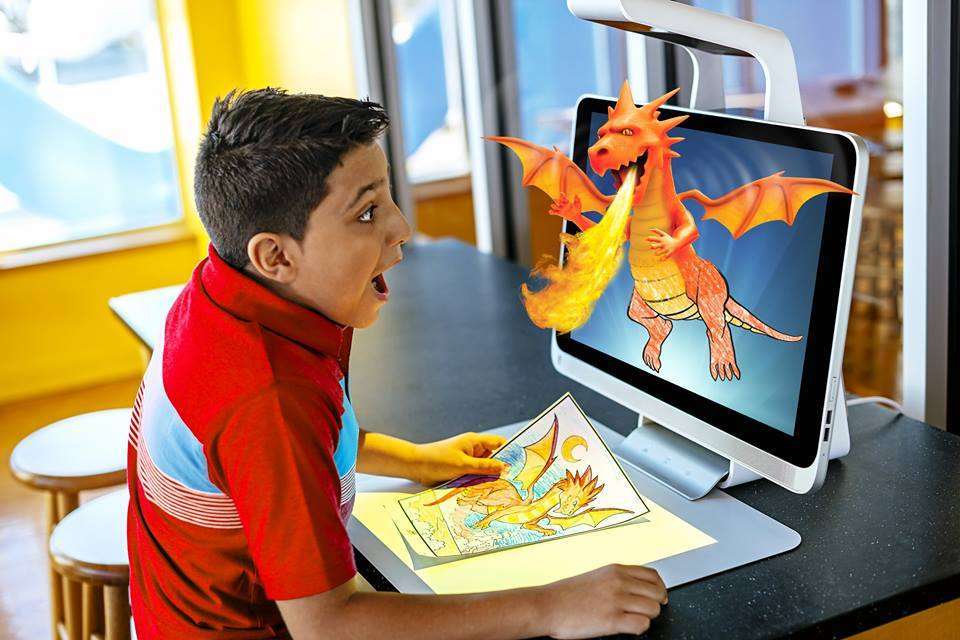
“The use of smartphones, tablets, and apps has given all of us a new toolset that can be utilized in attractions, especially in museums and FECs,” says George Wade, President of Bay Laurel Advisors, a consultant to IP holders in the LBE (location based entertainment) space. “The key to technology is we can’t focus on technology for the sake of technology. We have to remember that we’re providing a guest experience that should be well-rounded and repeatable for the guests, and therefore more beneficial to the operator.”
Augmented reality promises to enable operators to integrate elements into the experience of the attraction or property that will far exceed guest expectations.
“I believe in the next year we’re going to see the major theme parks reveal augmented reality components being utilized in fascinating ways,” said Cliff Warner, Chairman of Mycotoo (Los Angeles). “Imagine wearing clear goggles that enable you to see characters and effects intertwined within the area development or the scenery of the ride which will take the experience to a whole new level.”
Mass Drone Flight
The 2018 Winter Olympics gave the world a chance to see the broad entertainment potential of a mass, aerial lit drone show. During the opening ceremonies, 1,218 drones filled the sky above PyeongChang, forming and re-forming into colorful, animated shapes and characters. Although the technology had been seen before in other events, this brilliant display revealed a new breadth of scale and scope not previously achieved. The technology was recognized in 2019 with a TEA Thea Award.
“We are excited for the possibilities of Intel drone light shows,” said Anil V. Nanduri, General Manager of Intel’s Drone Group, “not only for the awe inspiring experiences that the technology can evoke for audiences, but for the fact that it is a smoke free, pollutant free, noise free, reusable alternative to fireworks – or, in some ways, to even augment fireworks.”
The combination of technologies including light-weight, LED lit drones, along with automated control software, allows show directors to create increasingly complex and precise animations in the sky. This will offer operators even greater opportunity to create unique experiences for their guests.
Credited as the inventor of the Shooting Star drone system that powered the Olympics show, Intel Senior Principal Engineer Daniel Gurdan, was quick to recognize the role of the technology in the creative process. “It’s only a tool,” he said in a presentation at the 2019 TEA Summit, “so we need creative people to create something that people want to come and see.”
Projection Mapping
Few recent visual effects advancements have triggered the excitement and broad adoption for location-based entertainment attractions and venues as projection mapping. Although the technology has matured to some degree, it is still advancing (see Laser Projection below). Today, the industry enthusiasm for projection mapping comes because of its flexibility to be blended with other technologies for greater effect.
“I think there’s convergence like never before between projection and show lighting. I think that we’re on the cusp of blending the two together to create some amazing illusions,” said Mark Andrew of Los Angeles-based Remarkable Light, a top attractions lighting designer. “By combining different lighting technologies–traditional show lighting, projection, fiber optics, lasers–you can create some really beautiful effects.”
Laser Projection
Laser projectors provide a brightness and wider color gamuts than previously achievable with traditional lamp projectors. While still more expensive than bulb projectors, they do not degrade as quickly and have lower maintenance costs over time. As the technology improves and research continues, the price point and selection of laser projectors have improved making their use much more available for operators of all sizes.
“The advancement of laser projection technology is continuing to further the ability to use projection in parks,” said Scott Arnold, Founder of TechFulcrum, a technical design company with many industry credits, headquartered in Miami. “We’re working on a project now that would potentially utilize many laser projectors, but if we had to use lamp projectors this wouldn’t even be considered, just because of the sheer number of them and the amount of maintenance needed to keep them running.”
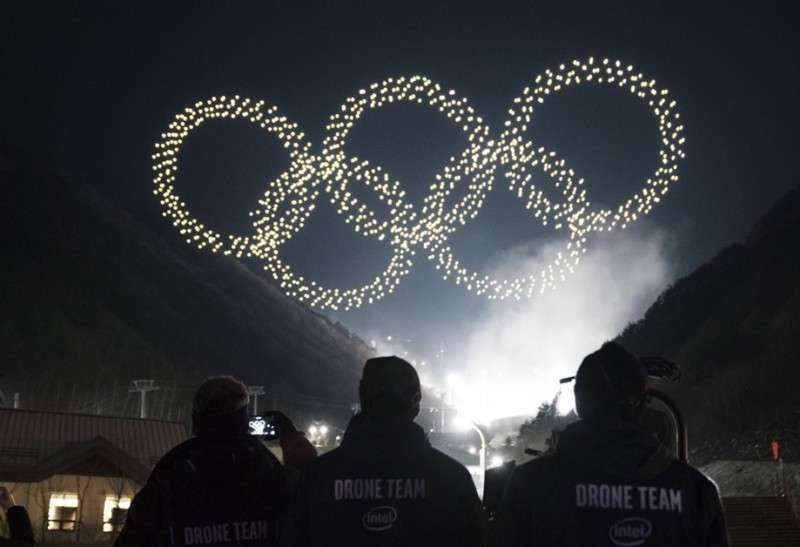
LED Video Walls
Emerging LED technology continues to push boundaries for large surface video displays. The industry sees new opportunities to replace image projection in a variety of exciting ways.
“In particular,” said Rick Rothschild, Chief Creative Director at FAR Out! Creative Direction, a creative pioneer of the industry with groundbreaking work in media-based attractions, “dome and irregular surface geometry display options are opening up new ways to tell stories and create experiences, allowing them to become more and more immersive and integrated into other forms of 3D storytelling.”
Attractions and shows like Guardians of the Galaxy – Mission: BREAKOUT! or King Kong on Broadway are utilizing the technology to a near perfect effect where projection would have fallen short of the desired effect.
Mark Andrew said, “The pixel pitch is getting tight enough, the resolution is getting better, and the intensity control is to the point where, in many cases, it is now preferable to use video walls over projections.”
Holographic Video
Innovations in holographic video technology have paved the way for remarkable live show enhancements featuring CGI effects that seamlessly integrate with the action stage.
In 2019, Hasbro will launch a TRANSFORMERS electronic music festival that will include gigantic holograms of their robot characters performing (and transforming) live on stage, including real-time interactions with cast and audience members to make each performance unique and unforgettable.
“By utilizing state-of-the-art holographic technology and the latest innovations in AI [artificial intelligence], we can bring our TRANSFORMERS characters to life in the real world,” said Matt Proulx, VP of Location Based Entertainment for Hasbro. “This real-world connection helps to enhance the affinity for our beloved TRANSFORMERS characters and brand by creating a truly unique, one of a kind, visually impactful and emotionally compelling experience that establishes a new dimension of entertainment for our TRANSFORMERS fans.”
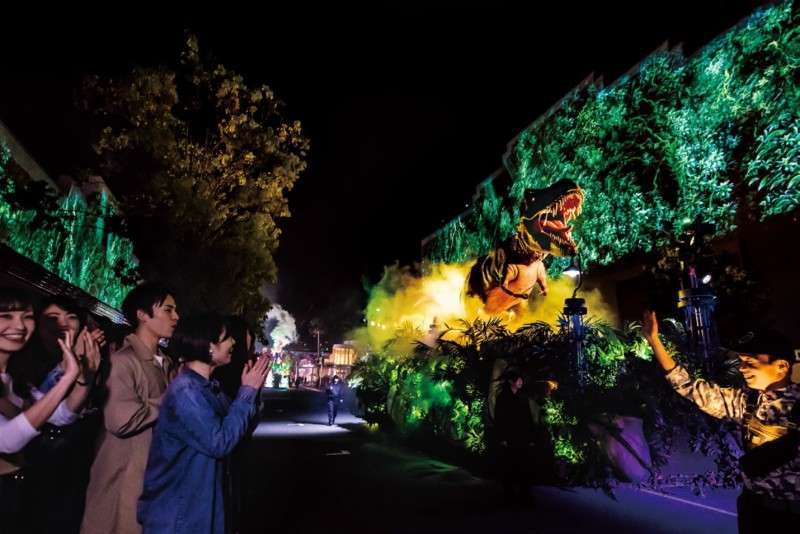
Low-Cost RGB LEDs
The gas lamp gave way to the electric light more than a century ago, and today, RGB LEDs are revolutionizing the way our industry lights themed environments, parades, and live shows. Although the technology has been around for some time, decreasing costs and increased availability are making it possible to utilize RGB LEDs in more ways than ever.
Chimelong Ocean Kingdom utilized one million color-changing LEDs to create a nighttime spectacular that did more with color and light than any parade had done before. Journey of Lights went far beyond a series of colorful floats and costumes – producers created a unified show from start to finish with the ability to be changed all at once.
“It used to be that when we put lights on a parade float or show set, we were limited to one color per light,” said Sean Chung, Senior Project Director for Miziker Entertainment. “But LEDs became so affordable that we could make every single one of our lights RGB. Once we made everything RGB, we had control over the color and brightness of every single light in our parade.” This allowed the team to create moments during the parade when sweeping color and lighting changes happen simultaneously along the entire parade route. Journey of Light was honored in 2019 with a TEA Thea Award.
Immersive Surround Sound
The soundscape is every bit as important as the visual landscape in theme park environments. Imagine Disney’s Jungle Cruise without the sounds of bugs, monkeys, and wild birds. Today, surround sound gives designers versatile tools to create even more immersive audio environments that add to the realism and mood of an area.
“Soundscaping is something guests expect much more than they did five years ago,” said Charlotte Huggins, President of Miziker Entertainment. “Today, we’re getting location-specific, controlled soundscaping that helps us create a holistic sound environment with more precise control than ever before.”
This kind of control is also essential in live shows, especially in large or motion-base theaters where movement and interactivity have the potential to shift the direction of sound.
“With these kind of new venues, traditional sound systems no longer fulfilled our needs,” said Bingo Tso. “Thus we had to develop our own processor that can up-mix stereo music into a multi-channel system.” Referring to “Legend of Camel Bells,” he said, “We successfully applied this technology in a large-scale, live spectacular that immersed the 3,000 person audience in a massive surround audio environment.”
Show Control Platforms
Although we’ve listed nine innovative and revolutionary AV technologies so far, it is clear that no single technology does the work on its own. Advances in show control systems create opportunities for two, three, or all of these technologies to work together within one attraction or show.
“We have to create flexible and open platforms,” said Helmut Protte of AV Stumpfl GmbH (headquartered in Austria) “which allow operators and show managers to combine all that new technology under an easy-to-use interface, while reducing the technical limitations for their creativity.”
For some applications this amounts to control over elements within a show, such as multi-screen video or projection mapping. “What is serving up the video is improving as well,” said Scott Arnold. “We went from having a box that simply spit out video to playback platforms that can do mesh correction, masking, layering, blending, motion tracking, and all kinds of cool things that can now be done at the server level.”
Show control systems are also now being used to create interconnectivity across the lighting and sound matrix allowing for park-wide, location-specific control.
“When we create a parade or parkwide event, we include lighting and audio,” said Charlotte Huggins. “But now, with today’s new technologies, the park or zone is designed with discreet and specific control over every speaker and every light, then we can do immersive and theatrical park-wide events.”
AV Unleashed
Our survey of leaders in the themed entertainment industry paints a clear picture that AV technology is often treated as a means to an end, a tool toward better storytelling. At the same time, designers, engineers, and operators appear to be united in their desire to develop the technology of sight and sound to create ever more immersive environments for guests that help them escape reality for a brief moment in time.
“One of the goals of AV technology is to take away the limits,” said Sean Chung. “Instead of being confined to a theater or attraction, now the entire park has become a largescale controllable theatrical environment capable of creating breathtaking new guest experiences on a completely new scale. I like to say that the whole park is our stage.” • • •
Freddy Martin ([email protected]) is a writer, storyteller, and independent consultant. He began his theme park voyage as a skipper on the Jungle Cruise at Disneyland. Freddy co-hosts the Themed Attraction Podcast with Mel McGowan of Storyland Studios, and is a regular contributor to InPark as well as ThemedAttraction.com. He also blogs at FreddyMartin.net.
Our panel of experts

ALAN ANDERSON – Managing Partner/ Co-Founder, Smart Monkeys Inc. – Known for creating solutions that focus on maximizing guest experience through innovative technology and reliable infrastructure, Alan has directed the design of many show control installations that have received numerous awards worldwide. Smart Monkeys, Inc. is a technical consulting firm specialized in feature-centric design and show control implementation.

MARK ANDREW – Principal Designer, Remarkable Light – Mark is a sought-after lighting designer whose work focuses on rides, attractions, themed restaurant and retail spaces, corporate visitors centers, and museum exhibits. His work includes Test Track at Epcot, The Shuttle Launch Experience at Kennedy Space Center, Skydeck at the Sears Tower, and BattleStations 21, a state of the art disaster training facility for the US Navy.

SCOTT ARNOLD – Founder, TechFulcrum – An experienced technical director and business executive, Scott has a diversified background with the consultation, design, and management of themed entertainment projects around the world. He has led various technology discipline design and installation teams for SeaWorld Parks & Entertainment, Busch Gardens, Universal, Chimelong, and Disney.

SEAN CHUNG – Senior Project Director, Miziker Entertainment – Sean’s work in themed entertainment began with production on Power of Nature, a 3D giant screen attraction film for the Wanda Group. He has since led special venue and parade spectacular projects for clients such as Chimelong, Genting Malaysia and Warner Bros., including the technically and creatively complex Journey of Lights Parade at Chimelong Ocean Kingdom.

CHARLOTTE HUGGINS – President, Miziker Entertainment – Charlotte is a multi-format media and movie producer of dozens of IMAX, special venue and feature films as well as ride and attraction films for theme parks clients including Disney, Futuroscope, and de Efteling. Recent achievements include the celebrated Journey of Lights Parade at Chimelong Ocean Kingdom and Chimelong Scareadise at Chimelong Paradise.

ANIL V. NANDURI – Vice President, Intel, General Manager, Drone Group – Under Anil’s leadership, the Intel Drone Group provides solutions for drone light shows which have entertained audiences worldwide including the PyeongChang Winter Olympics Opening Ceremonies and the new Dark Arts at Hogwarts Castle show at Universal Studios Hollywood. In 2019, Intel’s Shooting Star Drone System received a TEA Thea Award for Outstanding Technical Innovation.

HELMUT PROTTE – Global Business Development Manager, AV Stumpfl – Helmut is an expert in real-time video media server and show control for AV Stumpfl, an award-winning Austrian company that designs and manufactures high-performance projection hardware and show control systems. Their media servers were used for the production of the acclaimed Pigments de Lumière, a projection show at Fête des Lumières in Lyon, France.

MATT PROULX – Sr. Director, Global Branded Experiences, Hasbro – Matt is charged with enhancing Hasbro’s global presence in themed entertainment attractions, around the world. He has built long-term relationships with a variety of entertainment partners, including Universal, (TRANSFORMERS The Ride), Carnival Cruise Lines (Family Game Night), and innovative experiences such as Monopoly Mansion, the first ever MONOPOLY-themed hotel.
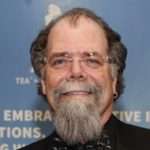
RICK ROTHSCHILD – Chief Creative, FAR Out! Creative Direction – Blending a unique set of entertainment skills developed over 40 years of experience as a filmmaker and director, Rick brings together a strong creative perspective with deep technical knowledge to provide both vision and direction to themed entertainment projects worldwide. He is currently providing creative direction for the Chimelong Group and the FlyOver attractions by Pursuit.

BINGO TSO – Senior Vice President/CTO of ACE International – A 40-year veteran in the pro-audio industry, Bingo has introduced many new technologies to the market and trained hundreds of engineers. He has been involved in the production of many significant events in China, including the Beijing Olympics and the Shanghai World Expo. The live, multimedia stage spectacular Legend of Camel Bells received a TEA Thea Award in 2019.

GEORGE WADE – President & Chief Advisor, Bay Laurel Advisors – A recognized leader in the development of high-end, mixed-use entertainment projects, George is an expert in brand development within the location-based entertainment industry. His company helps clients bring unique experiences to consumers in out-ofhome real estate environments. His clients include Crayola, Halo/X-Box, Peanuts Worldwide, and Hasbro Toys.

CLIFFORD WARNER – Chairman, Mycotoo – Cliff is known for being one of the top producers of award-winning experiences including Universal Studios’ WaterWorld Stunt Show, FiestaAventura’s Templo Del Fuego, Bollywood Park and Motiongate -including TEA Thea Award recipient DreamWorks Animation Zone. He co-founded Thinkwell Group and Mycotoo, a leading entertainment design and development company.


